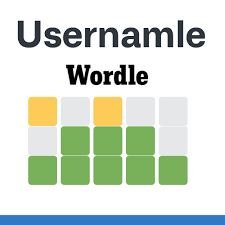
Username Wordle is a clever twist on the classic Wordle game, adding a personal touch to the gameplay. In this version, players might input their usernames or the usernames of their friends to generate a unique word puzzle tailored to them.

The core mechanics of Username Wordle would likely resemble those of the original Wordle game. Players would guess words of a certain length, typically five letters, and receive feedback on their guesses. Correct letters in the right position might be highlighted, while correct letters in the wrong position might be marked differently. Incorrect letters might be indicated as well, helping players narrow down their options with each guess.
What sets Username Wordle apart is the personalization aspect. Instead of a generic word, each game is generated based on a username. This could add an extra layer of challenge and enjoyment as players try to guess words related to themselves or their friends. For example, if someone's username is "gamer123," the game might generate a word related to gaming or use letters from the username itself.
The game could also incorporate social features, allowing players to challenge friends by inputting their usernames. This could lead to friendly competition as players try to solve word puzzles tailored to each other's usernames.
Using Mouse and Keyboard.
Start with Common Letters: Begin your guesses with letters that commonly appear in words, such as vowels (A, E, I, O, U) or frequently used consonants (T, N, S, R). This can help you quickly narrow down possibilities and eliminate less likely options.
Use Context: Consider the context of the username when making guesses. If the username suggests a theme or topic, try guessing words related to that theme. For example, if the username is "book lover," you might try words related to literature or reading.
Pay Attention to Feedback: Pay close attention to the feedback you receive after each guess. Use it to refine your strategy for subsequent guesses. Focus on which letters are correct and in the right position, as well as which letters are correct but in the wrong position.
Guess Word Patterns: Look for patterns in the word based on the feedback you receive. For example, if you know the first letter is correct but the second letter is not, try guessing words that fit that pattern. This can help you systematically narrow down possibilities.
Consider Word Length: Take note of the word length and use it to your advantage. Shorter words may be easier to guess because there are fewer possibilities, while longer words may require more strategic thinking and deduction.
there are many other games developed under Connections NYT, let's try them out